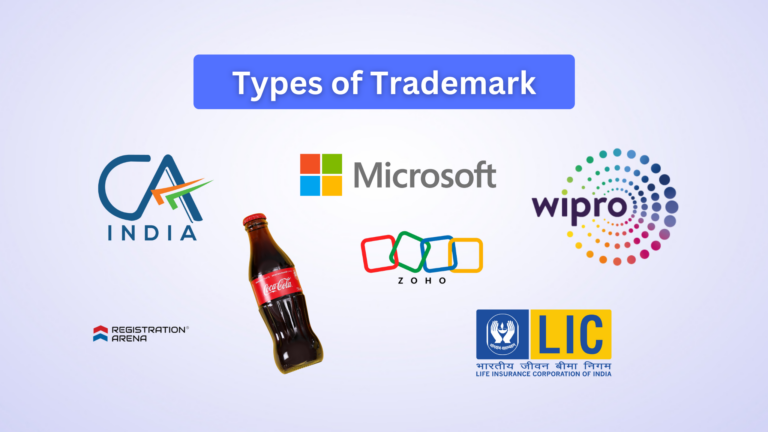When a trademark application is filed, there can be two possibilities. First one, if everything goes alright, your application will be accepted otherwise, if there was something found incorrect or incomplete, the same would be objected and shall not be continued further for registration. The latter process is called as trademark objection.
The Section 9 of Trademarks Act 1999 gives the power to the trademark Registrar to reject the trademark application on several grounds which are discussed below. Therefore, it is suggested that before submitting the trademark application, the applicant must go through the entire application and look for things if there is something missing to avoid the havoc of trademark objection.
Trademark Objection
A trademark application goes through many stages before getting to the registered stage. One of them, is the trademark objection stage. In this stage, the trademark examiner examines the trademark application. If he finds that the application is not appropriately filed, the examiner could raise an objection on various grounds as listed in the Trade Marks Act, 1999.
Once the trademark objection is raised by the examiner, the applicant of the trademark application is given a chance to make modification or prove in front of the examiner how his application has the caliber to avail a valid registration. This process is known as the reply to the examination report.

The trademark objection process is important to check if the application is not at any odds with the rules of trademark registration as listed in the Trade Marks Act 1999. The major reasons of the trademark objection can be sorted out in the two categories.
- If trademark application is incomplete: This means that, there is something missing to be filled in the trademark application and application is not complete as per the prescribed guidelines.
- If the similar trademark exists : If the trademark applied for has a significance with any present registered trademark or is of descriptive nature or devoid of any distinctive character as per Sec 9 and 11 of Trademark Act 1999. The process of trademark search is carried to look for any similarities with the trademark to be applied and examination search report is communicated to applicant.
Objection vs Opposition

People usually confuse the Opposition application with the objection process. The Trademark application goes through various stages before getting a green flag. The objection is the name given to the very initial stage of the process where the trademark application is objected by the Trademark Examiner of India on several listed grounds. This can be easily overcome by presenting the application in front of the Registrar.
Examination Report
The trademark application, as said above, goes through the stages of examination. If the application does not fulfill the grounds of registration, the trademark application would be given the status of “Objected”. According to the Trademarks Act, 1999, the examiner has been given the full authority to object the trademark application by signing an examination report.
An examination report is one which is produced after the proper examination of the trademark application. It contains the details of the similarities with already registered trademarks, the necessary distinctiveness details, absolute or relative grounds for refusal of trademark, any other modification to be done in application etc. The trademark objection decisions are taken with respect to the details mentioned in the trademark examination report.
Reasons for Trademark Objection
The following are the few reasons why trademark objection is raised :

Form TM-48 not filed :
The form TM-48 is filed in case the trademark application has been filed by Trademark agent/attorney on the behalf of the applicant. In case the same form has not been attached along with the application, or if it is filed incorrectly, the examiner could raise an objection. To rectify the same, the applicant is required to file signed and duly stamped Form TM 48 along with form TM-M.
Incorrect Trademark Form :
If the trademark application has not been filed through an appropriate form, the examiner of the trademarks could file an objection against the trademark application. According to the Trademark Act of 1999, the trademark application should be made through Form TM-A in case of goods or services falling in any of the class.
Incorrect Trademark class :
Listing the correct class is important while filling the trademark application. If the applicant has chosen the incorrect trademark class, then the examiner of the trademark holds the authority to file an objection against the trademark application. The trademarks for different goods and services have been divided into the 45 classes. 1-34 are for the goods and 35-45 are for the services.
Already existing trademark :
This is the condition when there is an already registered trademark existing like the one proposed in the application and there exists a likelihood of confusion on the part of the public. In this case as well, the examiner gives the status of “objected”.
The applicant, in this case is required to submit a reply report stating the proofs that the trademark is not same as the cited trademark in the trademark examination report.
Lack of Distinctive character :
The other ground where the trademark objection can be filed is when the trademark fails to distinguish between the products and services form one another. In this case, the applied trademark does not offer contradiction with other trademark. Example, The words like Sugar, Carbon, Name of a Person or Place etc lacks distinctive character. To rectify the same, the applicant is required to submit a report containing the evidence that the applied trademark contains the distinctive characters.
Descriptive Words :
The examiner shall mark the application as “objected”, where the words consist of marks or indications which may serve in trade to designate the kind, quality, quantity, intended purpose, values, geographical origin or the time of production of the goods or rendering of the service or such other characteristics of the goods or service which is descriptive in nature and not distinguishable. Example, the work15 degrees thermometer, super offers, green space, red apples etc shall be considered as descriptive in nature. The applicant is required to submit a reply report proving that the trademark is not descriptive.
Unspecified Goods and Services :
The application must contain the details of the goods and services for which the trademark is applied for. If the application fails to offer a specific detailed report, the examiner could raise an objection. The applicant should refrain from listing a huge list of goods or services. To overcome this case of objection, the applicant must file the signed copy of form TM-M to request change or modify the original form.
Deception in Trademark :
If the examiner finds the trademark application is deceiving in nature with regards to the general public, by means of its nature, quality or geographical origin of the product, the examiner can sign a trademark objection. The same could be overcome by filing the form TM-M. The marks which consist exclusively of marks or indications which have become customary in the current language or in the bona fide and established practices of the trade may be objected as well.
Unattached User Affidavit :
The user affidavit claims if there had been a prior date of the usage of the applied trademark. The applicant is required to attached along with the trademark application if he has been using the trademark prior to filing a trademark application. If the examiner finds it missing, he is authorized to put the trademark under the status of “objected”.
Conclusion
The Trademark Registry of India offers a chance to the applicant of the trademark to do the respective changes in the trademark application in case an objection has been filed against the same. The process of trademark reply offers few forms filing which the application could be put back in the path of registration.








